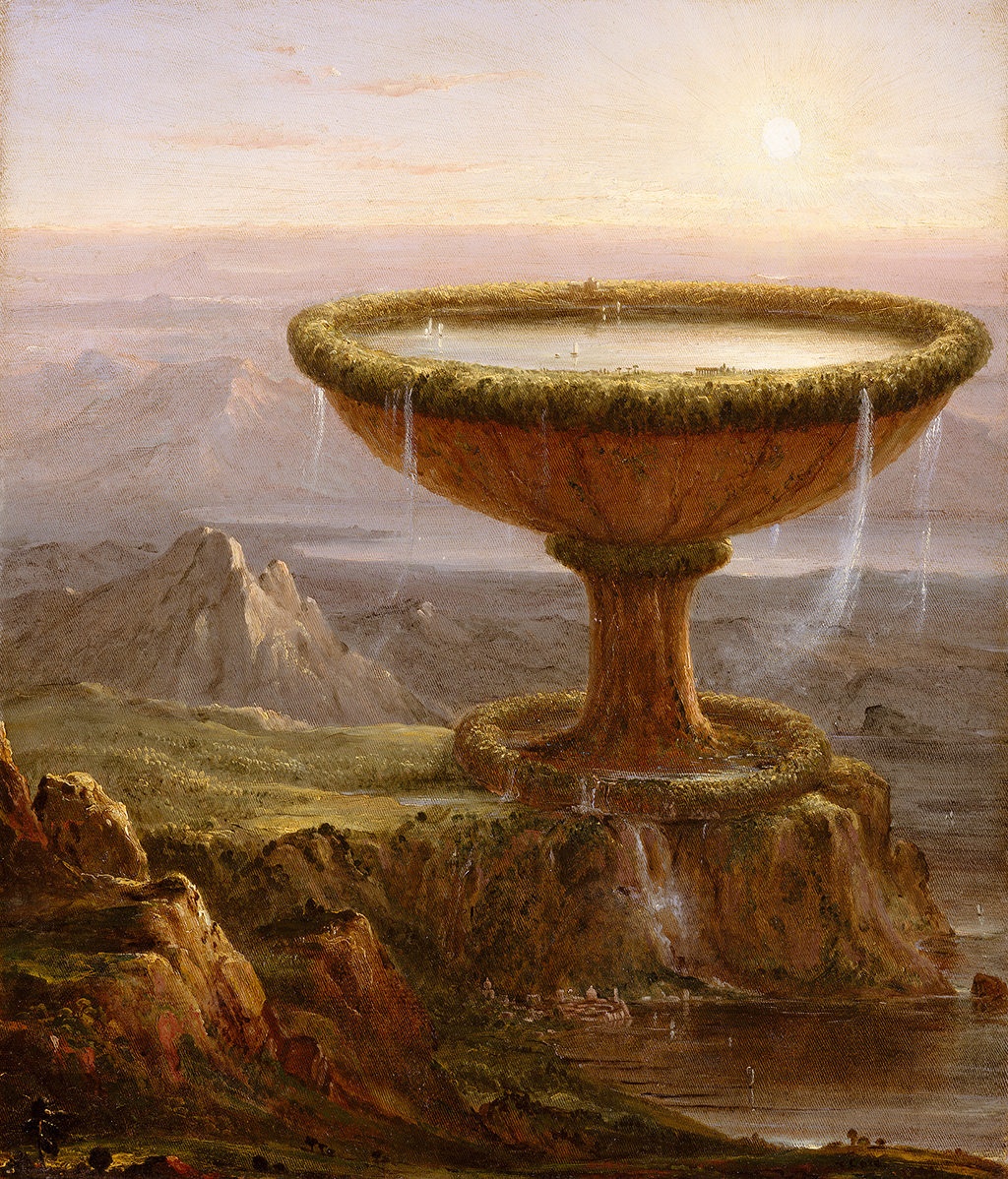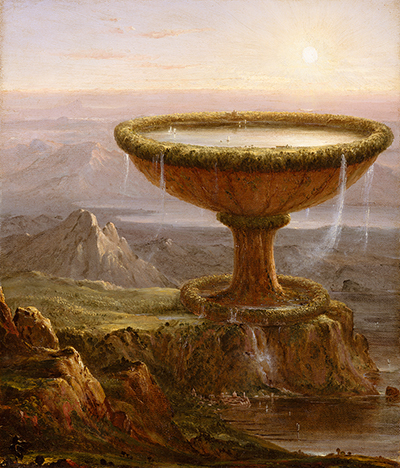Thomas Cole is an American painter of the 19th Century, famous for his painting of landscapes. One of Cole's best-known works is the painting, The Titan's Goblet. In 1833, Thomas Cole painted The Titan's Goblet. Many consider it to be the most mysterious of his fictional landscape scenes.
Some have described the painting as a work that defies explanation. Painted in the Romanticist style, it is an oil on canvas work. Unlike some of Cole's other landscape paintings, it is smaller in that it measures 49 x 41 cm. The scene Cole captures in the picture was his idea, rather than being a commission. Over the years the painting has had several owners. In 1904, Samuel Putnam Avery gifted the painter to the Metropolitan Museum of Art in New York. Since then it’s been a part of the Museum’s collection.
Looking at The Titan's Goblet it appears on the face of it to be a regular landscape scene. From an aerial view, there are mountain ranges and either a river or a lake. The background is of a setting sun that lights the evening sky. What changes things is the large rock goblet that sits on a rocky plateau on the painting's right side. For many, it is the goblet that changes the painting's meaning. It moves the scene from being a typical landscape into one that depicts a romantic and fictional landscape.
The size of the goblet in the painting fits with the idea of its use by a Titan. Both vegetation and buildings line the rim of the goblet. Also, the goblet is full of water which has the appearance of a large landlocked lake on which there are sailing boats. Water is streaming from all around the goblet and falling to the ground. To those in the small city at the base of the plateau, these streams have the appearance of waterfalls. Looking at the goblet, everything about it gives the impression of being something from the time when the Titans walked the earth.
When it comes to interpreting his paintings, Cole would usually provide text to go with them. He did not do this with The Titan's Goblet. Instead, Cole left the interpretation open for debate. There have, over the years, been many different ideas and theories that try to explain the meaning of the painting. One school of thought is that rather than there being one interpretation, those who come into contact with the picture will each have their ideas. Because there are many different ideas and theories, it is this which makes the painting unique to the viewer.





